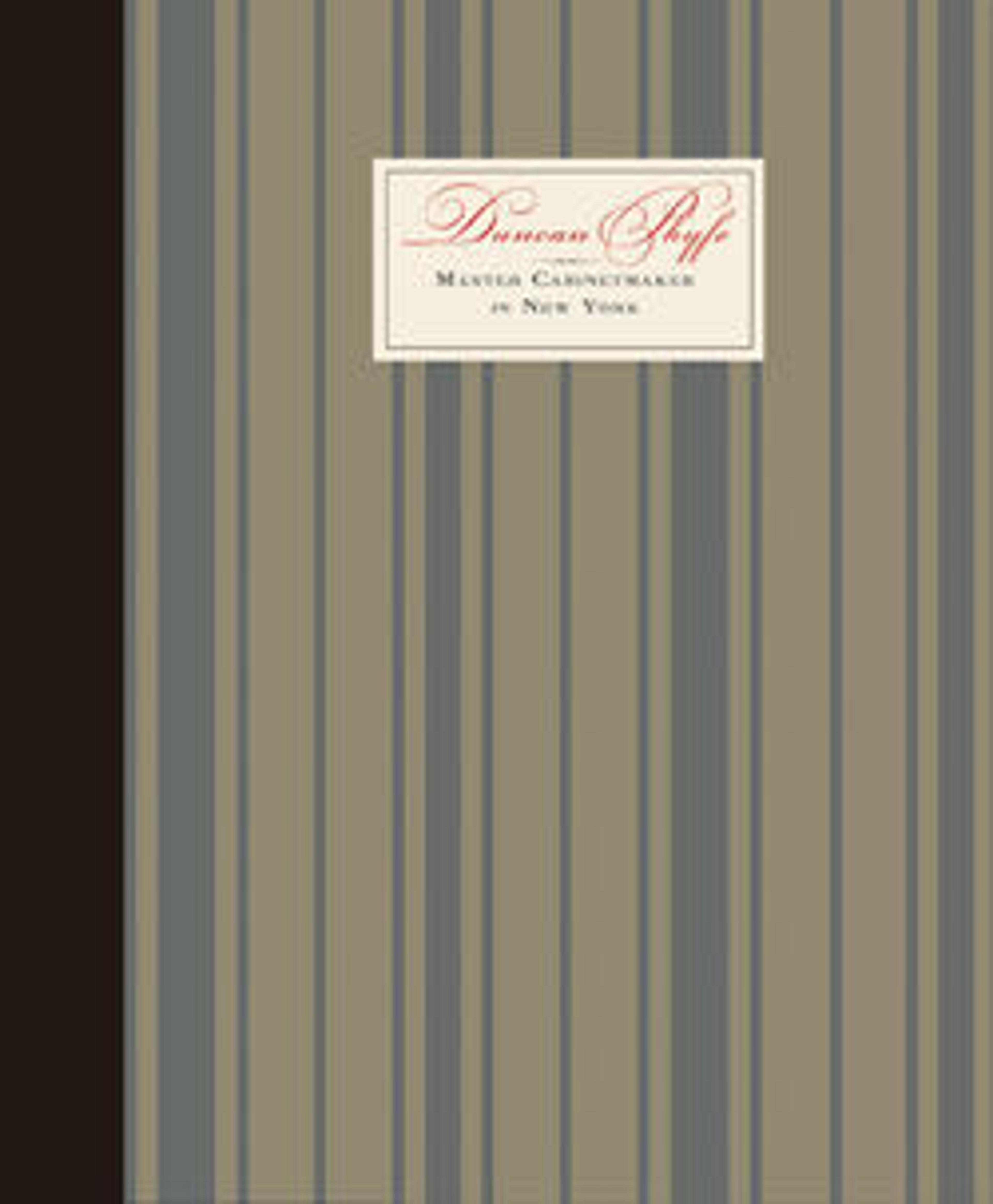Side Chair
This chair form, referred to in the period as a chaise gondole, is characterized by a deep concave back and in-swept stiles that extend forward to the front seat rail. In the early nineteenth century, designers and furniture makers embraced a revival of Classical prototypes from ancient Greek and Roman architecture and decorative arts. The sleek, curvaceous lines, and dramatic, figural mahogany veneers of this chair characterize the distinct Grecian Plain style that emerged in the 1820s to 1840s during the revival period. American cabinetmakers were highly influenced by French interpretations of Classical forms tha circulated in design books and periodicals, such as Pierre de La Mésangère's Collection de Meubles et Objets de Goût (1820–1831). As early as 1825, New York makers began to produce this style of chair which took inspiration from Mésangère. In an 1833 broadside advertisement by Joseph Meeks & Sons, a contemporary of the Phyfe workshop, these chairs are priced for sale at $12 each (see 43.15.8). Records show Phyfe, too, charged clients the same price for the popular French style chaise gondole.
This chair is part of an expansive suite of seating furniture attributed to the workshop of cabinetmaker Duncan Phyfe (see 66.221.1–.10 and 1972.264.1–.2). Numeric inscriptions on the surviving four side chairs in the Museum’s collection suggest that there were originally at least twelve in the suite. The set was made to furnish the New York City townhouse, belonging to the lawyer Samuel A. Foot, located at 678 Broadway which had been completed in 1837. In 1847 the Foot family relocated to Geneva, New York, and sold the Broadway house to Foot's nephew, Thomas A. Davies. The Phyfe suite was likely moved to the family's new dwelling, a palatial Grecian-style villa named Mullrose (extant, though altered). The furniture came to the museum through Foot’s descendants.
This chair is part of an expansive suite of seating furniture attributed to the workshop of cabinetmaker Duncan Phyfe (see 66.221.1–.10 and 1972.264.1–.2). Numeric inscriptions on the surviving four side chairs in the Museum’s collection suggest that there were originally at least twelve in the suite. The set was made to furnish the New York City townhouse, belonging to the lawyer Samuel A. Foot, located at 678 Broadway which had been completed in 1837. In 1847 the Foot family relocated to Geneva, New York, and sold the Broadway house to Foot's nephew, Thomas A. Davies. The Phyfe suite was likely moved to the family's new dwelling, a palatial Grecian-style villa named Mullrose (extant, though altered). The furniture came to the museum through Foot’s descendants.
Artwork Details
- Title: Side Chair
- Maker: Attributed to Workshop of Duncan Phyfe (American (born Scotland), near Lock Fannich, Ross-Shire, Scotland 1768/1770–1854 New York)
- Maker: or attributed to Duncan Phyfe & Sons (1837–1840, active New York)
- Date: ca. 1837
- Geography: Made in New York, New York, United States
- Culture: American
- Medium: Mahogany, mahogany veneer, ash, cherry
- Dimensions: 30 1/4 x 16 1/2 in. (76.8 x 41.9 cm)
- Credit Line: Purchase, L. E. Katzenbach Fund Gift, 1966
- Object Number: 66.221.5
- Curatorial Department: The American Wing
More Artwork
Research Resources
The Met provides unparalleled resources for research and welcomes an international community of students and scholars. The Met's Open Access API is where creators and researchers can connect to the The Met collection. Open Access data and public domain images are available for unrestricted commercial and noncommercial use without permission or fee.
To request images under copyright and other restrictions, please use this Image Request form.
Feedback
We continue to research and examine historical and cultural context for objects in The Met collection. If you have comments or questions about this object record, please contact us using the form below. The Museum looks forward to receiving your comments.
